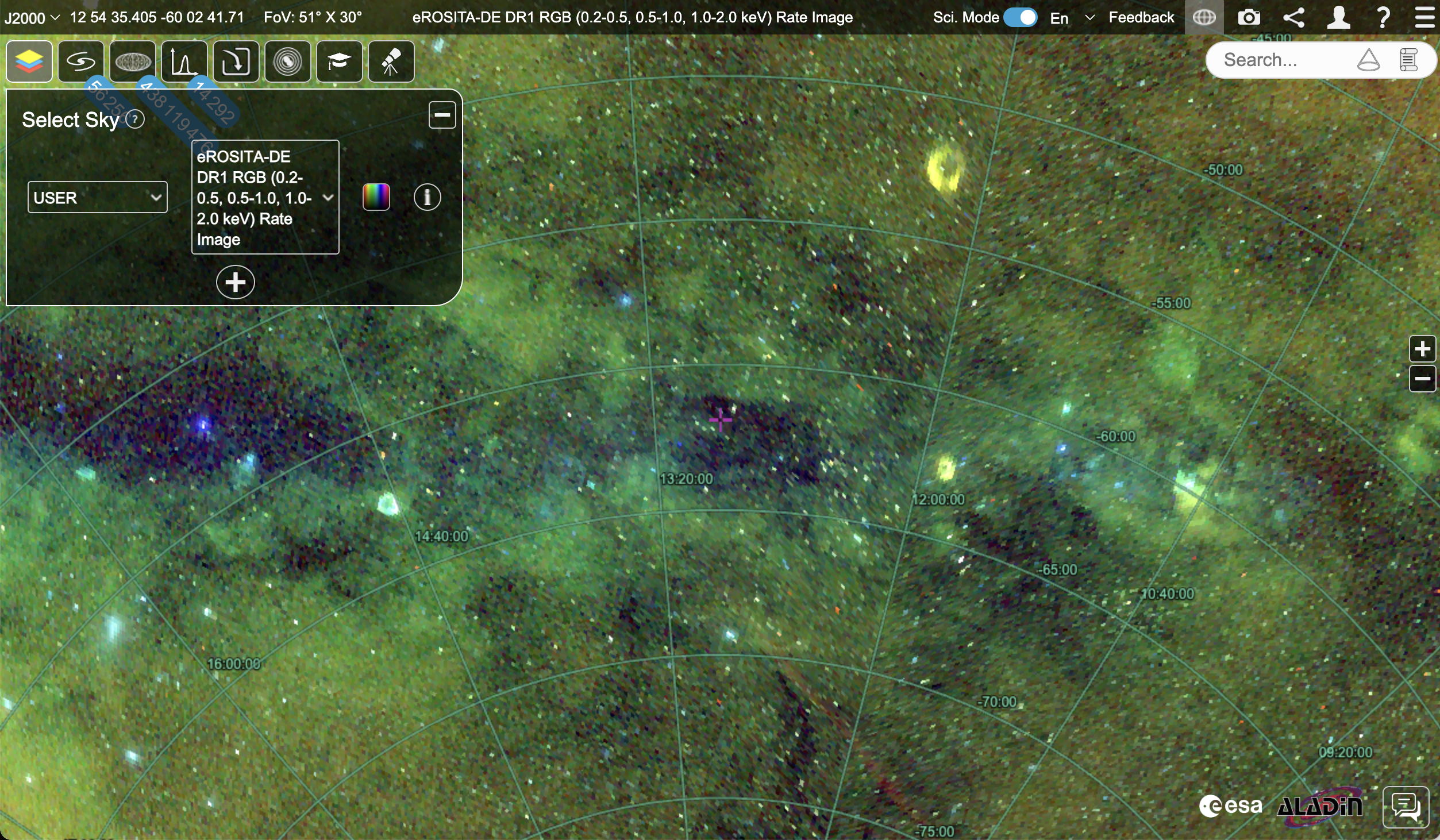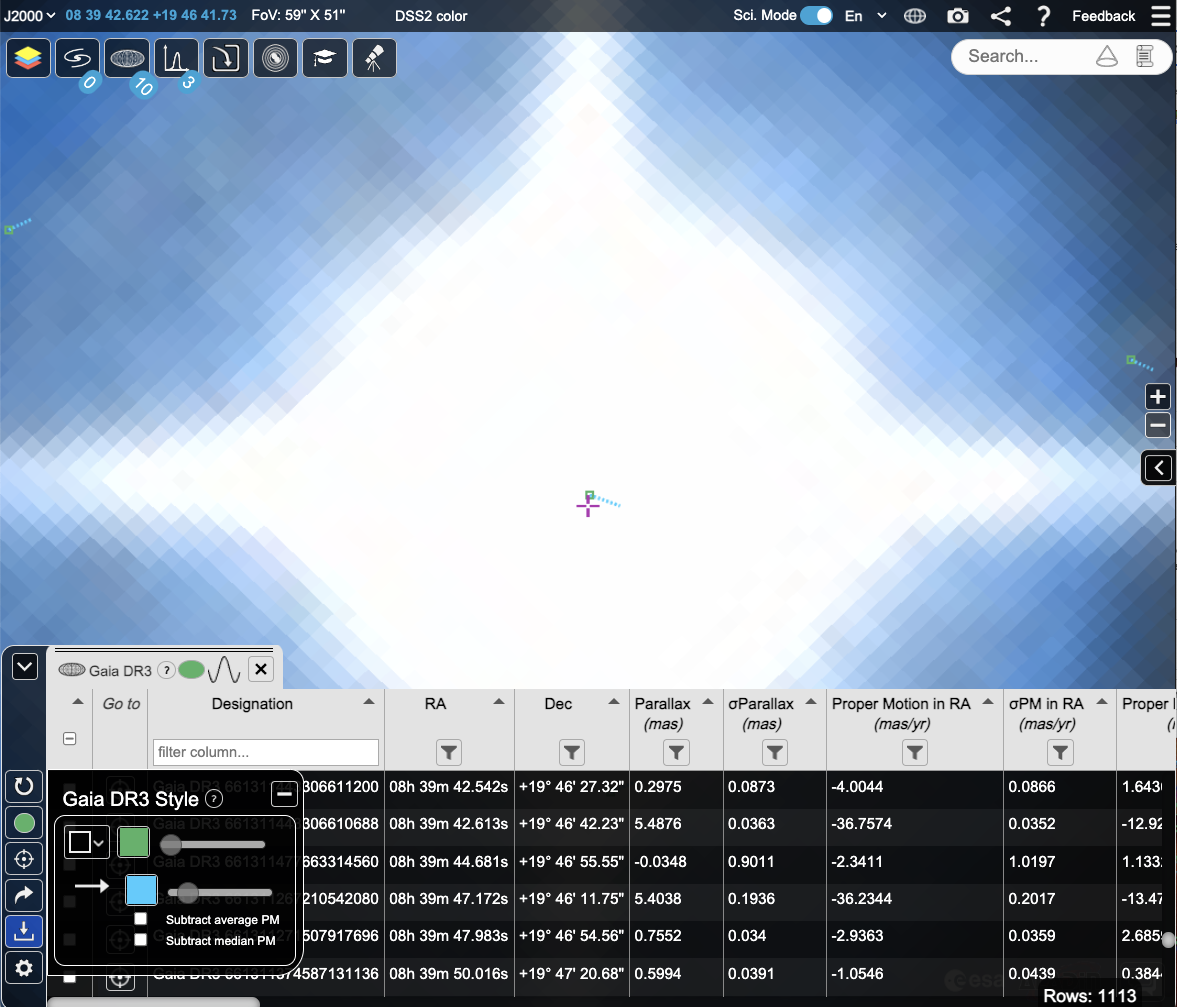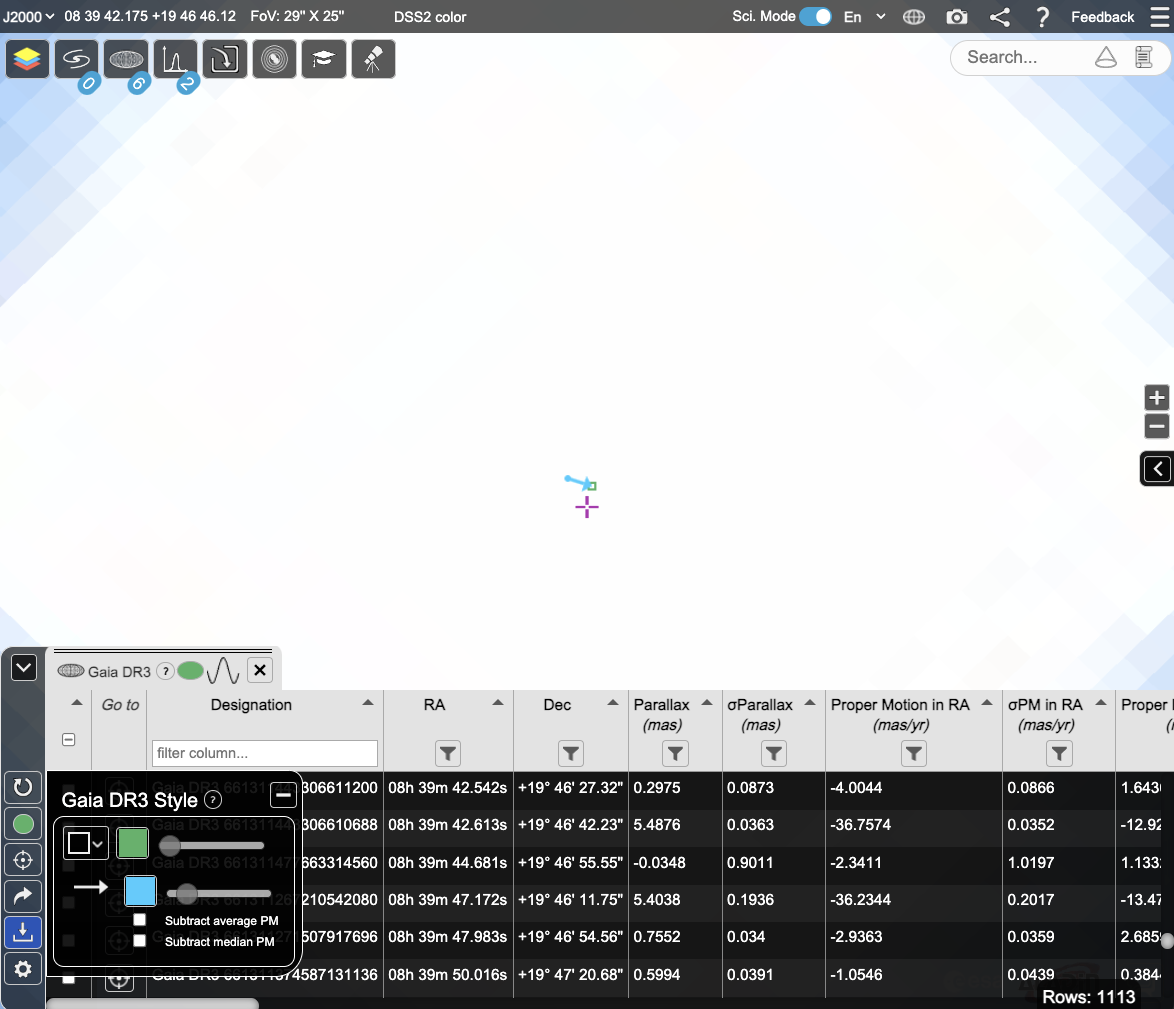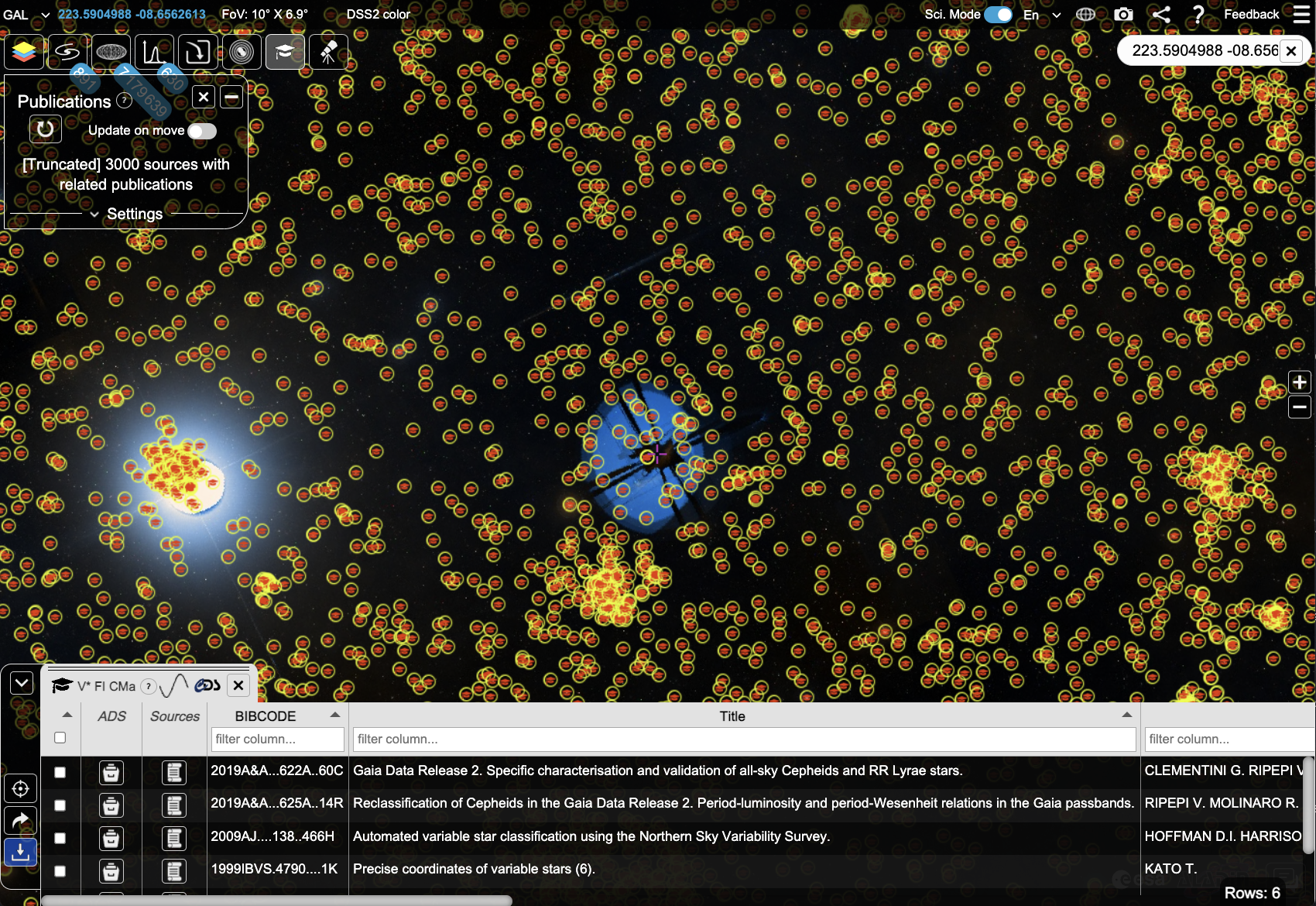Your comments
Dear Fanfan,
We are currently working with the eROSITA team to add DR1 data (catalogues and HiPS: background skies)!
And the eROSITA team have already registered their HiPS in the IVOA, which means you can open the DR1 eROSITA HiPS in ESASky by doing the following: click on the skies icon (top left), select the + button and choose 'Browse HiPS Registry'. Then type erosita in the ID or Title columns and all of the DR1 HIPS provided by eROSITA are listed. Then click the + button to the left of each HiPS to display it in ESASky:

You can find more information on how to access the HiPS registry in ESASky here: https://www.cosmos.esa.int/web/esdc/esasky-interface#skies
Many thanks for your feedback and we'll let you know when the rest of the eROSITA DR1 data is available in ESASky.
Kind regards,
Deborah
Dear ESASky user,
Many thanks for letting us know about this issue. Something had changed in the MAST TAP service, however, it should now be working again for you in ESASky.
Please let us know if you are still experiencing issues.
Best regards,
Deborah
Dear ESASky User,
Yes, it is possible to overlay a circle using CIRCLE, the central coordinates and radius (in degrees). E.g.:
{event: 'overlayFootprints', content:{'overlaySet': {'type': 'FootprintListOverlay', 'overlayName': 'test footprints', 'cooframe': 'J2000', 'color': 'red', 'lineWidth': 5, 'skyObjectList': [{'name': 'test footprint1', 'id': 1, 'stcs': 'CIRCLE ICRS 187.33912535049 -62.6616054228651 0.02', 'ra_deg': '187.287228500645', 'dec_deg': '-62.6876148176328'}]}}}
Here are some more examples of STCS strings (taken from the search tools information):
"BOX ICRS 11.421 41.764 10.071 41.765 10.079 40.864 11.411 40.863"
"POLYGON ICRS 9.97 41.04 11.13 41.94 11.45 42.0 11.34 41.51 10.15 40.53 9.79 40.80 9.97 41.03 9.97 41.03"
"CIRCLE ICRS 10.76 41.28 0.8"
In general, a BOX is the following:
BOX ICRS RA(1) DEC(1) RA(2) DEC(2) RA(3) DEC(3) RA(4) DEC(4).
A POLYGON can have more than 4 sets of coordinates:
POLYGON ICRS RA(1) DEC(1).... RA(n) DEC(n).
And a CIRCLE has the coordinates and radius:
CIRCLE ICRS RA(1) DEC(1) Radius
Finally, I'm afraid the ESASky source code is not currently available.
I hope all this helps.
Kind regards,
Deborah on behalf of the ESASky team
We're happy to report that the issue has now been fixed and the Hubble and Webb images can again be viewed in ESASky!
Dear Casey,
We're happy to report that the issue has now been fixed and the Hubble and Webb images can again be viewed in ESASky!
This turned out to be a CORS issue with the CDN that has been fixed.
Many thanks for your patience and for reporting the issue to us.
Best regards,
Debbie on behalf of the ESASky team
Dear ESASky user,
The dotted lines indicate the direction of motion of the stars that have proper motion values in the Gaia DR3 catalogue. However, these dotted lines only change to the solid line when you zoom in enough to see the actual proper motion (or at least the position from epoch J2000 to J2016, the Gaia DR3 epoch). See these two screenshots as an example of zooming in on a star:


More information about this feature and the astrometric catalogues in ESASky can be found in the documentation here: https://www.cosmos.esa.int/web/esdc/esasky-interface#datapanel
I hope this answers your question and we hope you're finding ESASky useful.
Best regards,
Deborah
Dear Becky,
Thank you for your message. Please note that these outreach images are created by the HST mission for outreach purposes, and their astrometry will therefore sometimes not be as precise as Gaia. We will pass this information on to the Hubble Outreach team and see if there is anything that can be done to improve the astrometry of the images within ESASky.
Kind regards,
Debbie, on behalf of the ESASky team
Hi,
I'm afraid I can't reproduce the issue you are having with the Publications feature, I'm trying in the region you gave GAL 223.5904988 -08.6562613 with almost the same field of view: 9.6° X 4.8° (see image below). Perhaps you experienced a connection error between ESASky and the service we use to collect the publication data? Can you try again and if you're still having this issue, please provide us with a few more details (your operating system and the browsers you are trying).:

Regarding the blue shadows you see in the background image, these are indeed instrumental. The colour image you see in the background of ESASky comes from the second Digitized Sky Survey (DSS2), which is a digitized version of several photographic ground-based surveys of the sky, produced by the Space Telescope Science Institute between 1983 and 2006. The colour background (HiPS) in ESASky was created by the Strasboug astronomical Data Center (CDS) by combining the three DSS2 filters in the red, blue and infrared. What you're seeing here looks like a reflection of part of the telescope instrumentation in the blue filter images.
Another user had a similar question about a different strange artifact in the same background sky, which might help answer your question: https://esdc.userecho.com/communities/1/topics/222-curious-as-to-what-this-is
Many thanks for contacting us and for using ESASky!
Kind regards,
Deborah on behalf of the ESASky team
Hi,
You can do this by right clicking in the sky (or press and hold if you are using a tablet or mobile) and a window appears with the coordinates and 5 icons:

If you click on the SIMBAD or the NED icon, you will be taken to these tools and shown a list of objects that are in the region and how far away these objects lie from your cursor position. More information about this feature can be found here:
https://www.cosmos.esa.int/web/esdc/esasky-interface#MODES
I hope this helps and many thanks for using ESASky.
Kind regards,
Debbie on behalf of the ESASky team
Customer support service by UserEcho


Dear Jerry L.
Indeed, the ERO images from Euclid are not available to download from ESASky (this is also the case for the Hubble and Webb outreach images). However, links to access the images and download the data are available from the Euclid ERO page here: https://www.cosmos.esa.int/web/euclid/ero-public-release
Kind regards,
Deborah on behalf of the ESASky team